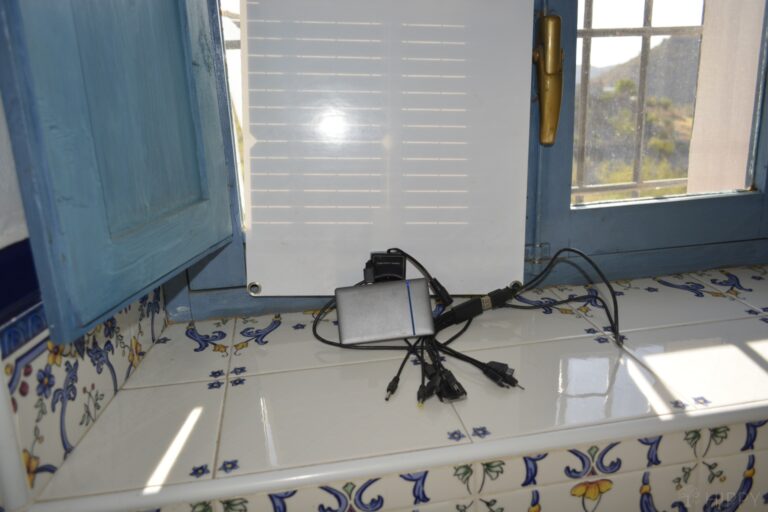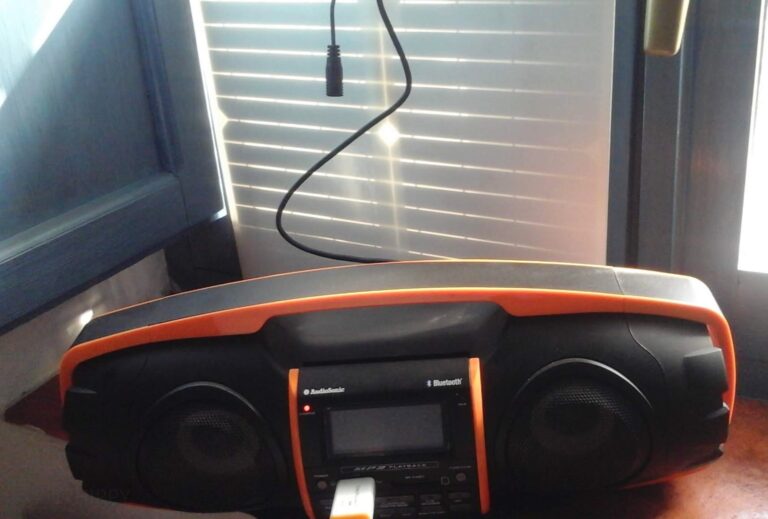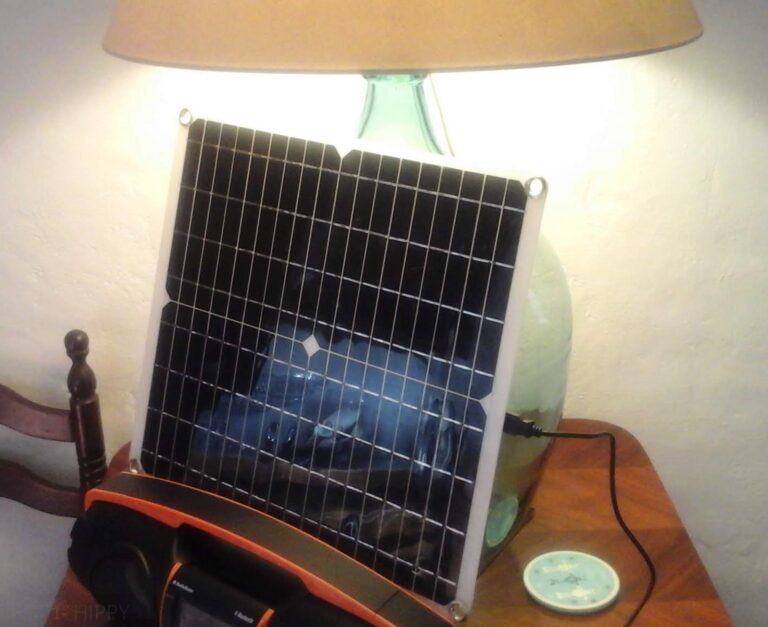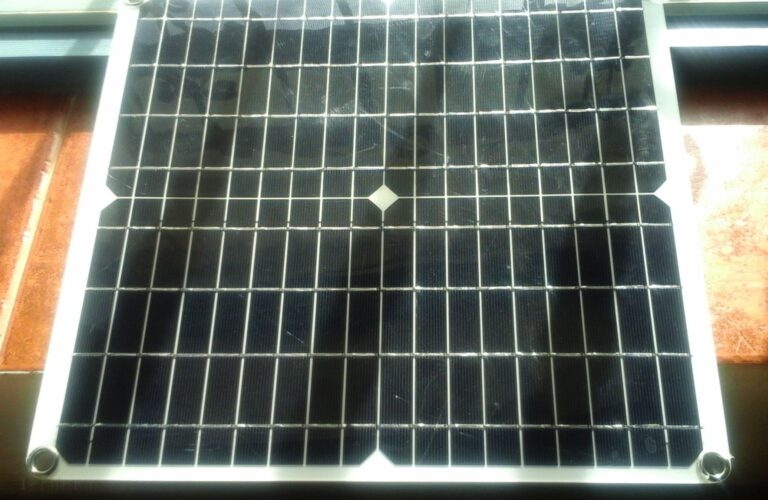I have to admit admit I was stunned when a friend asked me if solar panels and chargers work indoors. My immediate reaction was no.They are solar panels and obviously, they work by the sun shining on them.

Talking to other experienced solar users, however, I changed my mind, and I felt quite silly. In fact, I was surprised by what they had to say.
Since I rely heavily on solar energy on my homestead I just had to see for myself whether they work indoors.
So what were the results of my experiments? Do solar panels really work indoors?
Yes, solar panels definitely work indoors, either set up in the window, or powered by an incandescent or electric bulb – though don’t expect much in terms of efficiency.
Even if solar panels and chargers work less efficiently indoors, we shouldn’t ignore this ability. Think of this as an emergency prep, if for whatever reason you can’t set up tour panels outside.
There are basically two ways in which solar devices can work indoors.
Option #1: Solar Charging Indoors in a Sunny Position
A small solar panel, or any other similar portable charging device, can be placed in any location indoors that the sun is able to reach (even through a window).

This picture clearly shows a portable solar panel that is resting on a windowsill. The panel is actively working to charge a radio.
Since the window is closed, the sun is passing through the glass and a mosquito netting – this is installed outside the window. There are many “interferences” that you would think would make the panel inoperable.
I also tried connecting the panel to a mobile phone and a battery bank – both devices charged over some time.
My windows have a single pane of glass, with no fancy double glazing or tints. However, would a solar panel still function if the sun passes through double glazing or a tint?
More glass and a tint could reduce efficiency but in most cases, the panels would still produce a charge. The only option that would prove to be more challenging is a privacy tint.
This works best on a sunny day when the sun is shining directly on the solar panel. However, it should still work on cloudy days, though it will not be as efficient.
Option #2: Solar Panel Exposed to Light Bulbs
The second option for producing power from a solar panel indoors is to expose the panel to the light from a lamp.

(Solar Panel Exposed to Lamplight)
This picture shows the same panel that was used in the previous example. This time the panel is exposed to the light from a lamp.
When the panel was connected to a radio or a mobile phone or a power bank it charged them, however, it did take an extremely long time.
Well, perhaps my theory for perpetual electricity production could be a workable option!
Incandescent Bulbs
An incandescent light bulb is an old technology. It’s not particularly especially energy efficient compared with more modern products.
This type of light bulb functions by passing electricity through a wire filament that is in a sealed gaseous chamber. The current heats the wire, causing it to glow. Light is then created.
Provided that this type of bulb is sufficiently bright, it will produce a charge in the solar panel.
The wavelength of the light produced by this type of bulb is similar to ultraviolet waves from the sun. This allows the solar cell to convert light into energy.
The panel will need to be approximately 15 to 20 inches from the bulb and will need to remain there for some time.
A device that would charge in two hours from a sun-exposed panel will take three to four hours using this method.
LED Light Bulbs
LED bulbs are the current standard for most lighting situations in a house. They produce similar levels of light but require lower levels of energy to achieve this.
These bulbs work by producing light from light-emitting diodes. The more light required, the more diodes are used.
These bulbs produce long infrared and ultraviolet waves that are similar to those that the sun emits.
Because of this, they are able to transform this light into energy in the solar panel. Just as with an incandescent bulb, the panel should be 15 to 20 inches from the light source to have an effect.
Which Bulb is Best to Use?
The majority of light sources do not create high levels of ultraviolet light waves and have a restricted light spectrum.
However, the LED bulb does produce light with a wider spectrum – and since it uses less energy, it is perhaps a slightly better option.
The higher the power that the bulb emits, the higher the power generation achieved. The minimum sized bulb to have a reasonable charging effect would be:
- Incandescent Watts 100
- LED Watts 20
These bulbs will both produce around 1600 lumens.
Obviously, the bulb is only one part of the equation when we are looking at generating power indoors. The better the solar device that is being used, the better the charge that it will produce.
Factors for This to Work
When discussing any form of technology, especially involving solar power, there is always a host of compatibility issues that arise.
So when we ask if solar panels work indoors our answer has to be yes – but only if certain parameters are met.
Light Intensity
Our eyes are designed to adjust and adapt to lighting levels. They deceive us slightly, telling us that the light indoors is bright. There is actually a massive difference between light levels indoors and outside.
By comparing the light intensity indoors and outdoors, we are able to measure lux levels. Lux levels are a count of the number of visible light rays that are entering the eye.
We can realistically expect the Lux level in a house that has average levels of light (enough to read by) to be in the region of 1000. The lux level in direct sunlight would be in the region of 100,000.
Since the power that can be generated by a solar panel is directly related to the amount of light that it is exposed to, it isn’t hard to see that the large difference in the Lux levels will have a significant effect on the power produced.
Color
The color of light or the “spectrum” is another thing that affects the operation of solar panels. Every light source emits a different spectrum or different combinations of colors.
Light from the sun is emitted in a full spectrum, which ranges from blue to red and also extends into the infrared range.
Today, we mainly use LED lights indoors. This type of light produces light from a narrow range of colors from the spectrum.
Solar panels are aware of the light spectrum that they are exposed to, with panels responding differently to the various wavelengths of each color of the spectrum.
Measuring how panels collect and absorb different wavelengths within a spectrum is quantified as Quantum Efficiency. Using this metric we can to assess how efficient solar panels are in different lighting conditions.
Trying to use a solar panel in the limited spectral light that is available from indoor light fittings greatly reduces the panel’s Quantum Efficiency. As a result, this reduces the power that can be produced.
Size
Solar panels are constructed by electrically connecting several photovoltaic cells. An individual solar cell will generate 0.5 Volts. Consequently, they need to be joined together to be able to produce a useful voltage.
A solar panel that contains 60 cells will measure 39″ x 66″. This size is completely impractical for indoor use. It would be difficult to balance on a side table at this size.
You will have noticed that the solar array that is installed outside will normally contain several of these panels.
In addition to being clumsy to use, a large exterior panel requires correspondingly high levels of exterior light to enable it to function correctly.
As such, only a smaller panel would prove to be of any use indoors, like this one:

Construction
During the construction process, crystalline wafers are cut into smaller pieces. This process allows countless tiny defects to develop and become part of the panel.
For outside use, these tiny defects, due to the high levels of light that it will be exposed to, will have little effect on the operation of the panel.
With the lower levels of light that a panel will be exposed to in an indoor environment, these tiny defects become more relevant and can render the panel totally useless.
Adjustments to the manufacturing process can be made to reduce defects. These panels may cost you more money, and may not always be the best option.
When used in low light levels, this does help, but reduces the panel’s efficiency when used in an outdoor environment.
Panels that are used outside are constructed in a manner that allows them to collect as much light as is possible from the sun.
They rely on absorbing the maximum levels of visible and infrared to generate the levels of power needed.
Panels that are optimized in this way will not perform well in an indoor environment where there is little or no infrared light.
There is one exception. Some panels are constructed from Amorphous Silicon. These will function using only visible light and do not require infrared.
This type of panel will function more efficiently indoors by using the light source that is available from LEDs and other lights.
What Can We Power With A Solar Panel Indoors?
The power level that we are able to produce with this technology is extremely restricted.
You’re won’t be able to run energy-sucking items like fridges, TVs, or computers.
The solar panel that I have used will produce 5 volts with 3 amps – so clearly anything that require more power won’t function.
Don’t get discouraged, though, because there are many other devices that can be powered with the limited amount of energy provided by an indoor solar panel:
- Cell phones
- Charging portable radios
- Security cameras
- Wi-Fi routers
- Solar lights
- Tablets and e-Readers
- Battery banks

Three years ago, I bought an off-grid Cortijo in a small valley in the Andalucian mountains. Although, perhaps the lifestyle is in my genes as my grandfather and his four brothers were Homesteaders in Alberta Canada in the 1900s.
The mountains of Spain are a difficult place to grow many of the flowers that I was used to in the UK. However, veggies grow well year-round. Peppers, tomatoes, potatoes, lettuce, cucumber, melons, and chard all fare well in the Mediterranean climate. Almond trees provide me with a cash crop of around 1 ton while still retaining some to make almond milk and flour.
Meet the rest of the Homesteading Hippy team here.
